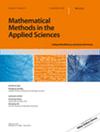非局部扩散方程的BV解及其在乘性消噪中的应用
IF 1.8
3区 数学
Q1 MATHEMATICS, APPLIED
引用次数: 0
摘要
乘法伽玛去噪一直是图像处理中的一个关键问题。伽马噪声的倍增机制和重尾分布使其去除变得非常复杂。针对这两个特点,本文提出了一种新的灰色值指示函数,该函数被插入到一个新的非局部扩散方程模型中,该模型结合了Perona-Malik模型和正则化Perona-Malik模型的优点。此外,利用广义杨测度的概念证明了当初值u 0∈BV (Ω)∩时BV解的存在性和所提模型的极大原理L∞(Ω) $$ {u}_0\in BV\left(\Omega \right)\cap {L}^{\infty}\left(\Omega \right) $$。我们采用显式有限差分法来实现我们的模型,并进行了对比实验。本文章由计算机程序翻译,如有差异,请以英文原文为准。
The BV Solution for a Nonlocal Diffusion Equation and Its Application on Multiplicative Noise Removal
Multiplicative Gamma denoising is always a critical challenge in image processing. The multiplicative mechanism and the heavy-tailed distribution of the Gamma noise significantly complicate its removal. To address these two characteristics, this paper proposes a novel gray value indicator function, which is inserted into a new nonlocal diffusion equation model that combines the strengths of the Perona–Malik model and the regularized Perona–Malik model. Furthermore, the concept of generalized Young measure is used to prove the existence for BV solutions and the maximum principle of the proposed model when the initial value . We employ the explicit finite difference method to implement our model, and comparative experiments are conducted.
求助全文
通过发布文献求助,成功后即可免费获取论文全文。
去求助
来源期刊
CiteScore
4.90
自引率
6.90%
发文量
798
审稿时长
6 months
期刊介绍:
Mathematical Methods in the Applied Sciences publishes papers dealing with new mathematical methods for the consideration of linear and non-linear, direct and inverse problems for physical relevant processes over time- and space- varying media under certain initial, boundary, transition conditions etc. Papers dealing with biomathematical content, population dynamics and network problems are most welcome.
Mathematical Methods in the Applied Sciences is an interdisciplinary journal: therefore, all manuscripts must be written to be accessible to a broad scientific but mathematically advanced audience. All papers must contain carefully written introduction and conclusion sections, which should include a clear exposition of the underlying scientific problem, a summary of the mathematical results and the tools used in deriving the results. Furthermore, the scientific importance of the manuscript and its conclusions should be made clear. Papers dealing with numerical processes or which contain only the application of well established methods will not be accepted.
Because of the broad scope of the journal, authors should minimize the use of technical jargon from their subfield in order to increase the accessibility of their paper and appeal to a wider readership. If technical terms are necessary, authors should define them clearly so that the main ideas are understandable also to readers not working in the same subfield.

 求助内容:
求助内容: 应助结果提醒方式:
应助结果提醒方式:


